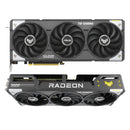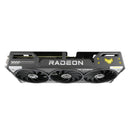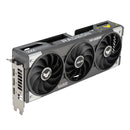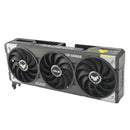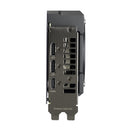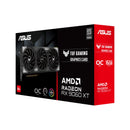Description

Specifications:
| Model | TUF-RX9060XT-O16G-GAMING |
|---|---|
| Graphic Engine | AMD Radeon™ RX 9060 XT |
| Bus Standard | PCI Express 5.0 |
| OpenGL | OpenGL®4.6 |
| Video Memory | 16GB GDDR6 |
| Engine Clock | OC mode (GPU Tweak III): up to 3340 MHz (Boost Clock) / up to 2800 MHz (Game Clock) Default mode: up to 3320 MHz (Boost Clock) / up to 2780 MHz (Game Clock) |
| Stream Processors | 2048 |
| Memory Speed | 20 Gbps |
| Memory Interface | 128-bit |
| Resolution | Digital Max Resolution 7680 x 4320 |
| Interface | Yes x 1 (Native HDMI 2.1b) Yes x 2 (Native DisplayPort 2.1a) |
| HDCP Support | Yes (2.3) |
| Maximum Display Support | 3 |
| NVlink/ Crossfire Support | No |
| Accessories | 1 x TUF certificate of Reliability 1 x TUF Velcro Hook & Loop 1 x TUF Fridge Magnet 1 x Thank you card 1 x Speedsetup Manual |
| Software | ASUS GPU Tweak III & Drivers: please download all software from the support site. |
| Dimensions | 304 x 126 x 50mm |
| Recommended PSU | 550W |
| Power Connectors | 1 x 8-pin |
| Slot | 2.5 Slot |
| AURA SYNC | RGB |
| Note | * Our wattage recommendation is based on a fully overclocked GPU and CPU system configuration. For a more tailored suggestion, please use the “Choose By Wattage” feature on our PSU product page: https://rog.asus.com/event/PSU/ASUS-Power-Supply-Units/index.html * All specifications are subject to change without notice. Please check with your supplier for exact offers. Products may not be available in all markets. If you do not use the latest and current specifications of ASUS products, you shall be liable for all loss and damage claimed by third party to ASUS based on false advertising or any other issues caused from using false specifications of ASUS products. * ‘Game Clock’ is the expected GPU clock when running typical gaming applications, set to typical TGP (Total Graphics Power). Actual individual game clock results may vary. * ‘Boost Clock’ is the maximum frequency achievable on the GPU running a bursty workload. Boost clock achievability, frequency, and sustainability will vary based on several factors, including but not limited to: thermal conditions and variation in applications and workloads. |














